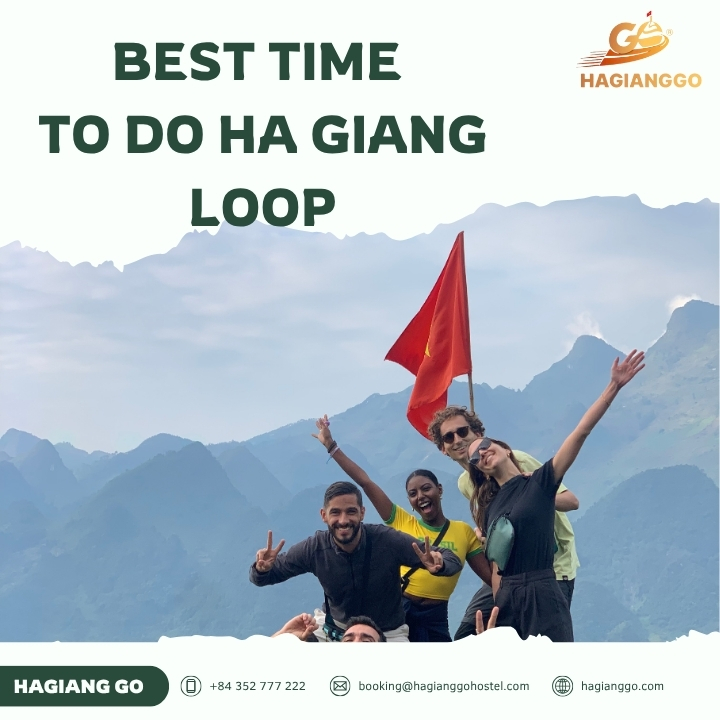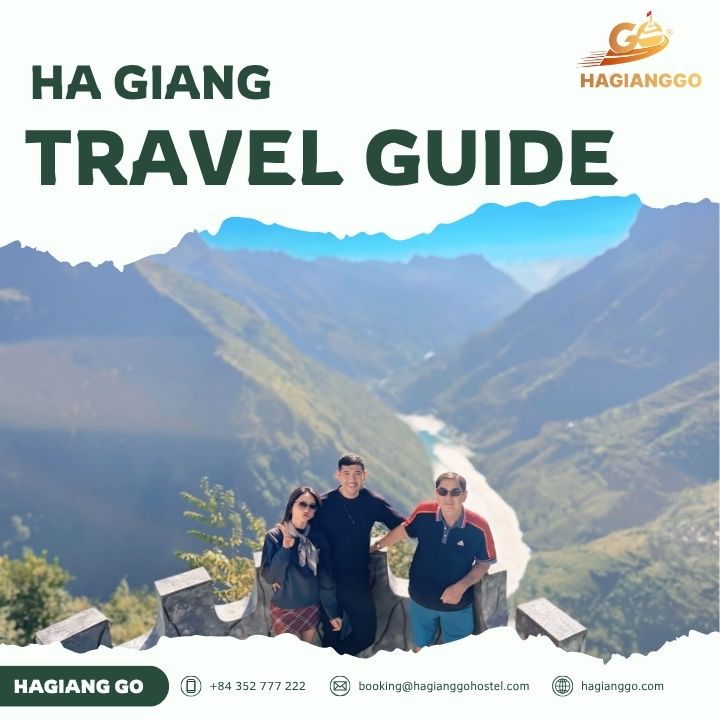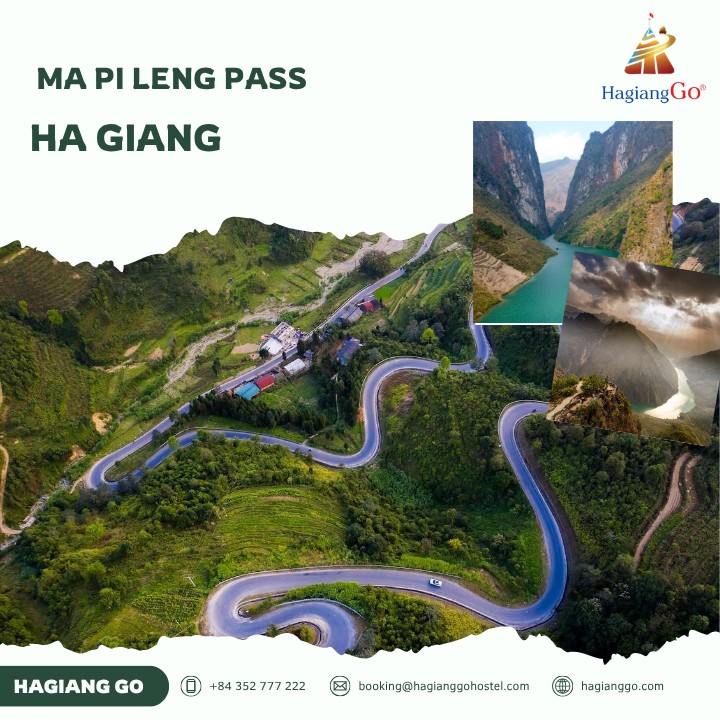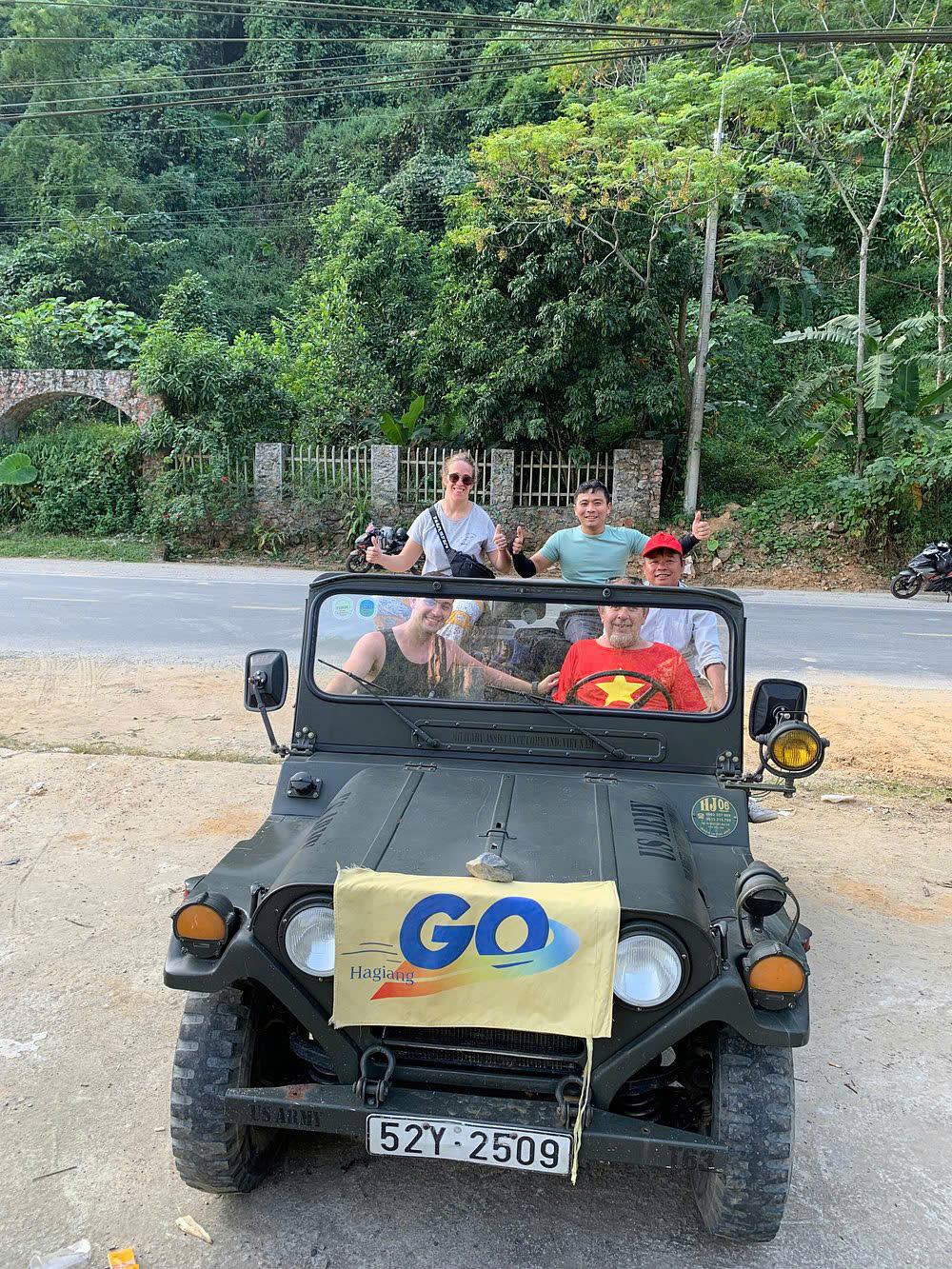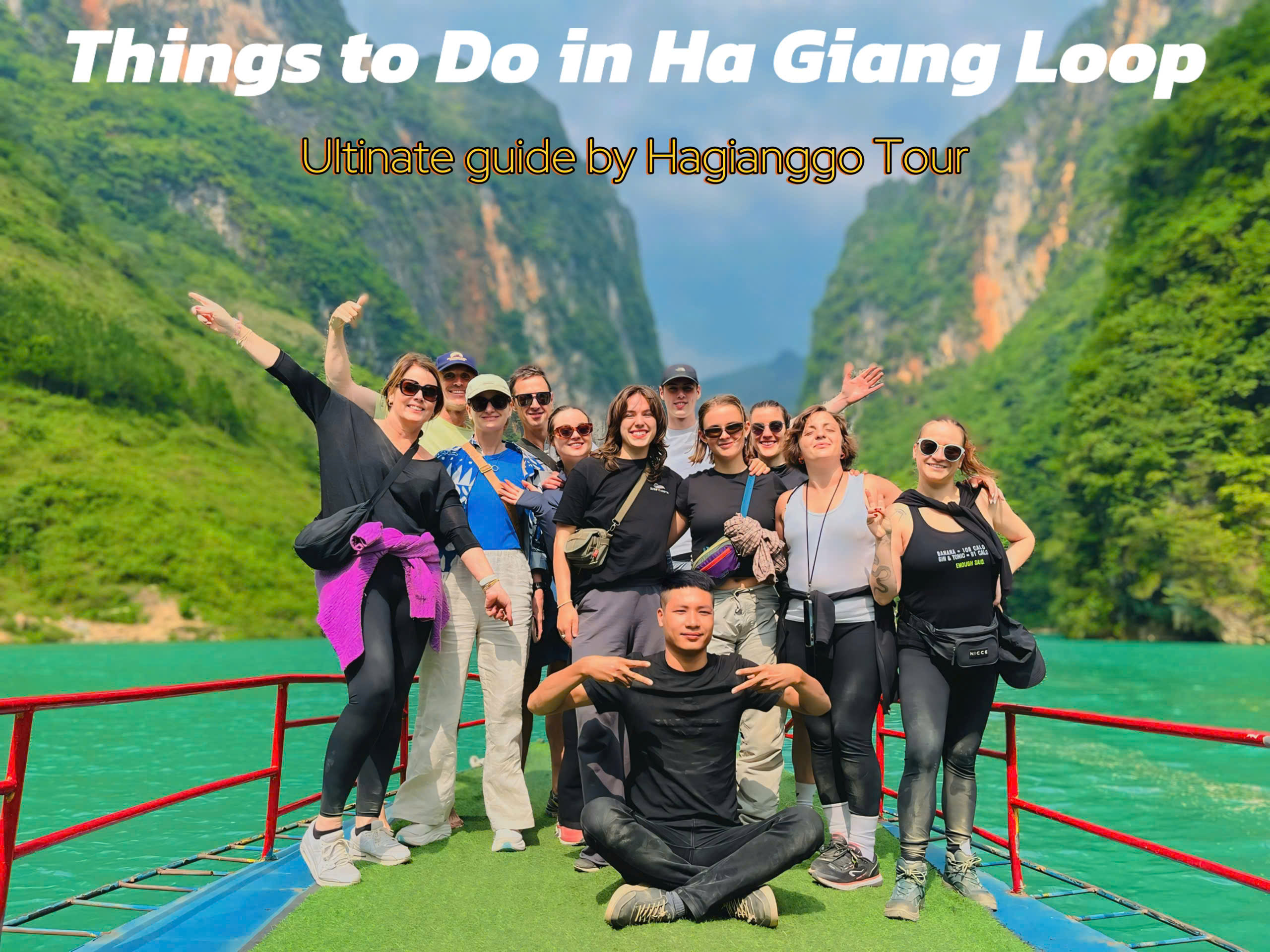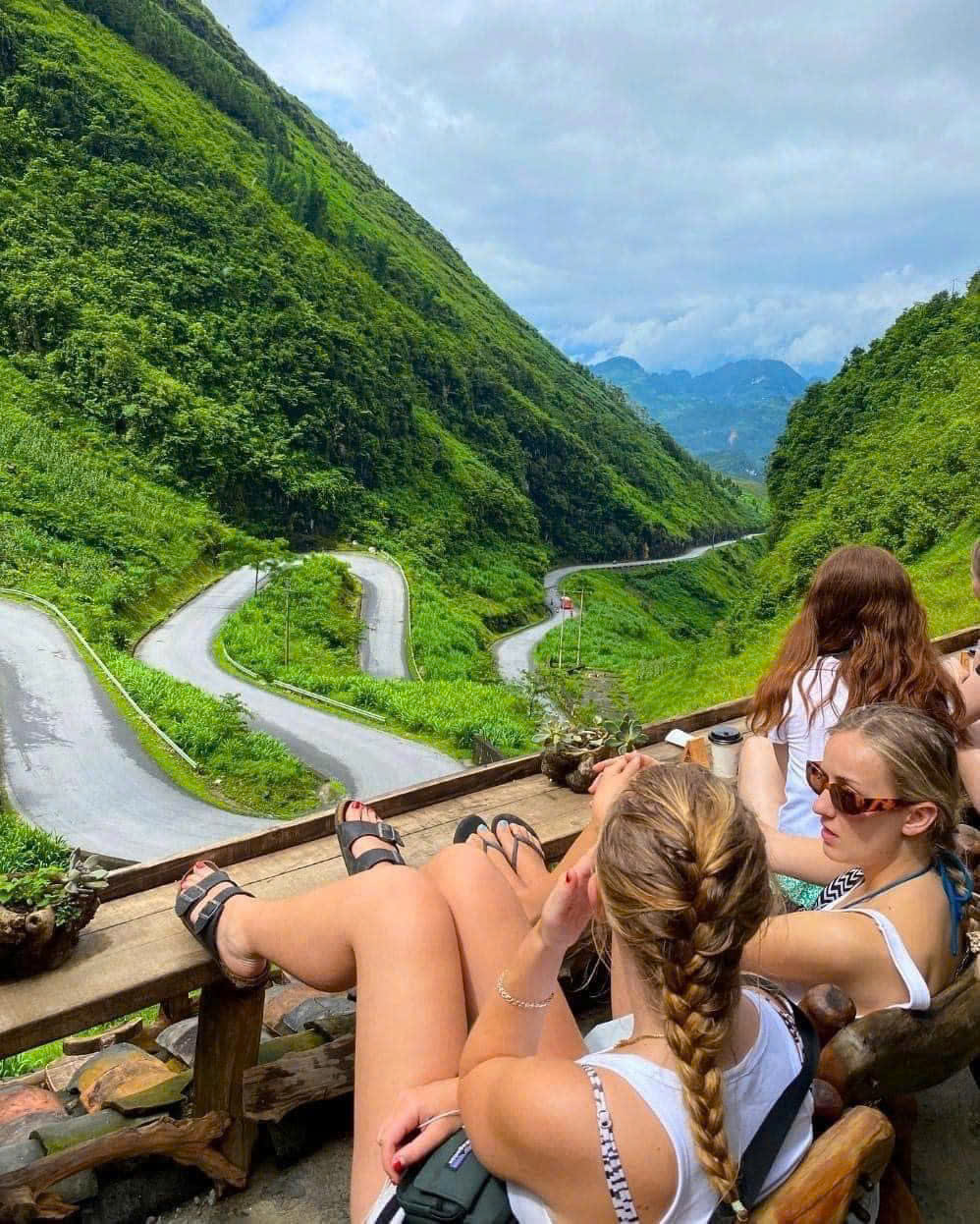1. Where is Lo Lo Chai village located?
Lo Lo Chai village is situated in the Dong Van Karst Plateau, within Lung Cu commune, Dong Van district, Ha Giang province. This remote settlement sits approximately 136 kilometres from Ha Giang city centre and about 25 kilometres from Dong Van town. The village is perched at an elevation of nearly 1,500 meters above sea level, making it one of the highest inhabited areas in Vietnam.
The village's location places it very close to Vietnam's border with China, offering visitors the unique opportunity to stand at one of the country's northernmost points. This strategic position has shaped the culture and history of the Lo Lo people, who have maintained their distinct identity despite centuries of external influences.
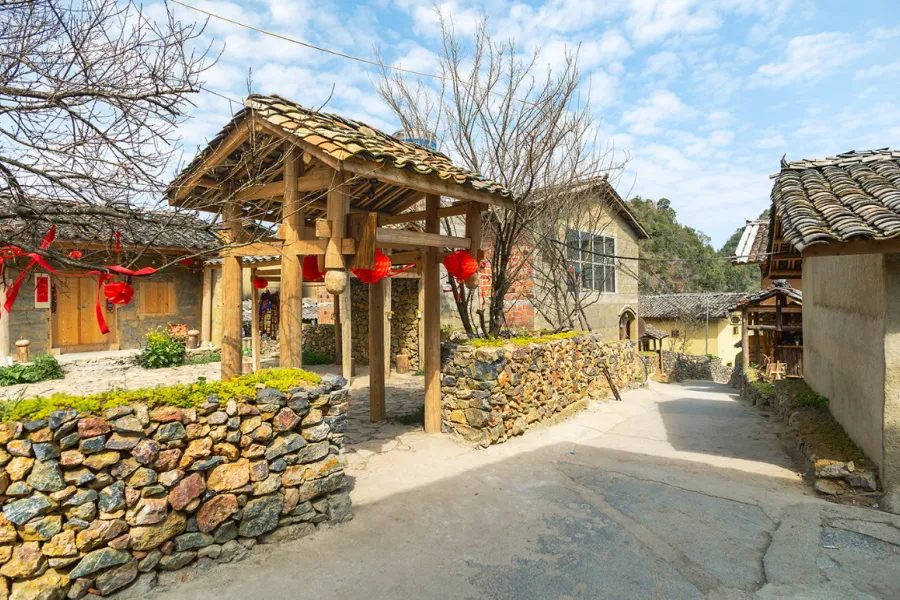
A corner of Lo Lo Chai - Source: Asiatouradvisor
2. How to get to Lo Lo Chai village?
2.1. Traveling to Lo Lo Chai village by motorbike
Travelling to Lo Lo Chai by motorbike is not just the most practical option – it's an adventure in itself. The winding mountain roads offer spectacular views of limestone karst formations, deep valleys, and terraced fields that make the journey as memorable as the destination.
The route from Ha Giang city takes you through some of Vietnam's most dramatic landscapes. You'll navigate the famous Ma Pi Leng Pass, one of the most beautiful and challenging mountain passes in the country, with its serpentine curves carved into cliff sides. The road winds through traditional villages, past corn and buckwheat fields, and offers breathtaking panoramic views of the Nho Quế River valley below.
Recommended Motorbike Rental Shops in Ha Giang City:
- HaGiang Go: Top-rated and reliable motorbike rental shop, located on 15 Le Tran Man, Cau Me, Phuong Thien, Ha Giang, Vietnam
- QT Motorbike Rental: Located on Lam Dong street, known for well-maintained bikes and helpful staff.
- Jasmine Motorbike: On Cau Me street, offers both manual and semi-automatic options.
- Ha Giang Motorbike Rental: On 40 Lam Dong street, provides safety equipment and local maps.
- Easy Rider Ha Giang: On Huu Nghi Street, specialises in guided tours and bike rentals.

Source: hagiangroadtrip
2.2. Getting by Bus
For those who prefer not to drive, public buses from Ha Giang city to Dong Van town are a suitable choice. These buses depart several times daily from the Ha Giang bus station, with the journey taking approximately 2-3 hours depending on road conditions. From Dong Van, you can hire a local motorbike taxi or join a tour group to reach Lo Lo Chai village. However, this option limits your flexibility to explore the area at your own pace and may require planning to coordinate transportation.
3. What to do in Lo Lo Chai Village?
3.1. Explore the Unique Architecture
Walking through Lo Lo Chai feels like stepping back in time. The village showcases a remarkable blend of architectural styles that reflect the Lo Lo people's adaptation to their mountainous environment. Traditional houses are built using local stone foundations with wooden frames and distinctive thatched roofs made from palm leaves or grass.
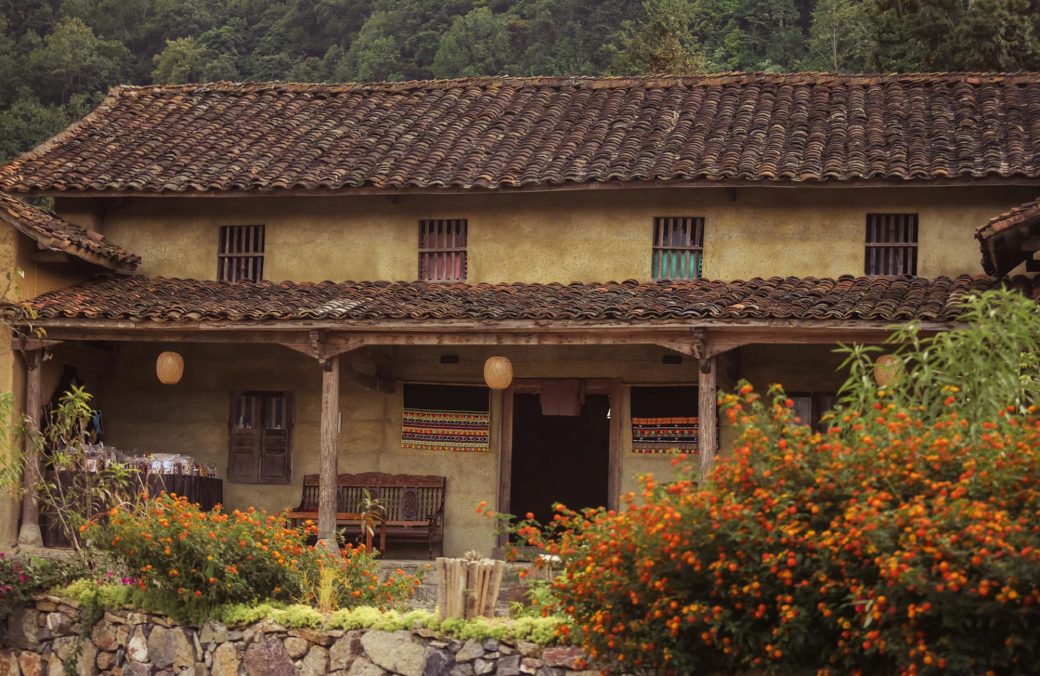
A typical house in Lo Lo Chai - Source: Vnexpress
What makes the architecture particularly fascinating is how it incorporates both Vietnamese and Chinese influences due to the village's border location. Many houses feature carved wooden elements, decorative stone work, and courtyards designed for communal activities. The buildings are constructed to withstand harsh mountain weather while maintaining the warm, lived-in feel that makes this village so welcoming.
Take time to observe the intricate details: the way stones are fitted together without mortar, the positioning of houses to maximise sunlight and protection from winds, and the integration of livestock areas within residential compounds. Each structure tells a story of practical mountain living refined over generations.
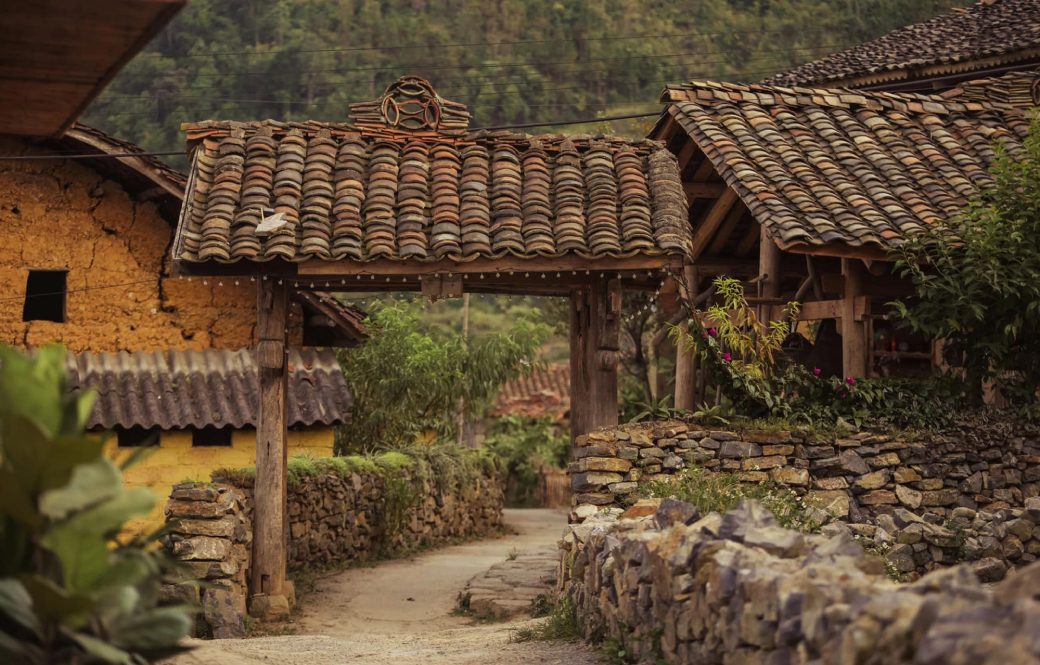
Source: Vnexpress
3.2. Stay in a homestay to experience local culture
Staying overnight in a homestay is perhaps the most rewarding way to experience Lo Lo Chai. These accommodations offer far more than just a place to sleep – they provide an immersive cultural experience where you'll share meals with local families, learn about daily life, and participate in traditional activities.

There are many homestays in Lo Lo Chai - Source: Vnexpress
Homestay Experience Highlights:
- Wake up to mist-covered mountains and the sounds of village life beginning
- Share traditional meals prepared using recipes passed down through generations
- Learn about Lo Lo customs, beliefs, and the significance of various cultural practices
- Participate in daily activities like farming, cooking, or traditional crafts
- Enjoy evening conversations by the fire while listening to local stories and legends
Recommended Homestays:
- Sủng Là Homestay: Offers authentic Lo Lo cultural experiences with knowledgeable hosts
- Lo Lo Chai Traditional House: Features traditional architecture and home-cooked meals
- Mountain View Homestay: Provides stunning valley views and comfortable accommodations
- Culture Bridge Homestay: Specialises in cultural exchange programs and language practice
- Highland Family Homestay: Known for its warm hospitality and traditional craft workshops
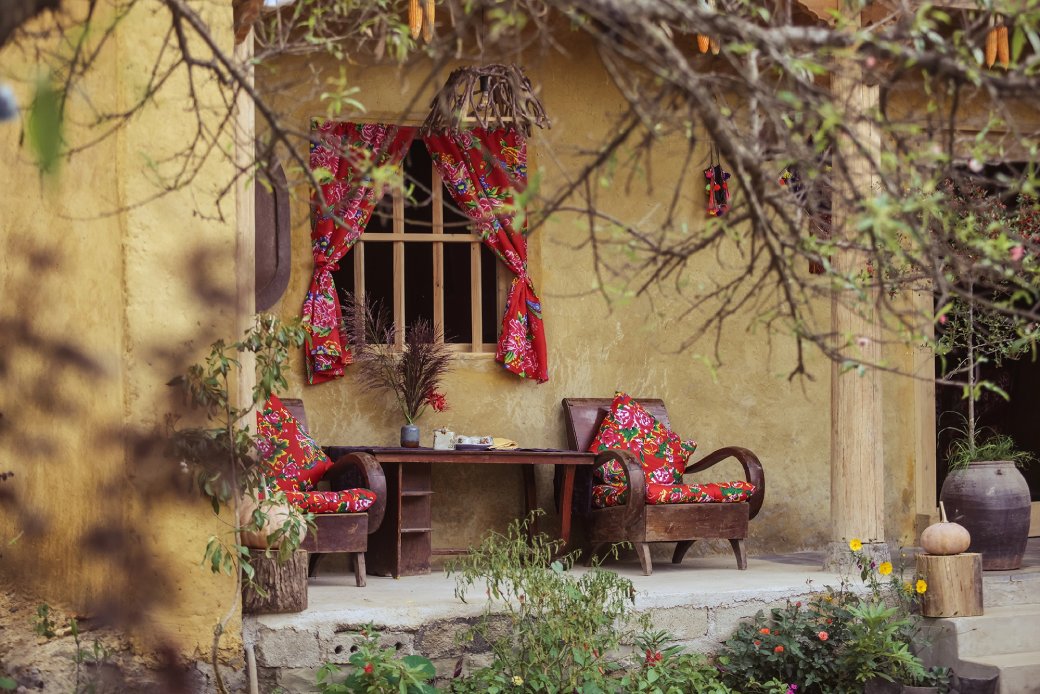
Source: Vnexpress
3.3. Try on traditional ethnic clothing and photography
The Lo Lo people are known for their vibrant and distinctive traditional clothing, which plays an important role in their cultural identity. Women's traditional outfits typically feature colourful embroidered jackets, pleated skirts, and intricate silver jewellery. The clothing incorporates bright colours like red, blue, and yellow, with patterns that hold spiritual and cultural significance.
Men's traditional attire includes dark-colored jackets, loose-fitting pants, and distinctive headwear. The clothing is designed for both practical mountain living and ceremonial occasions, with different outfits worn for daily work, festivals, and special events.
Important Notes When Wearing Traditional Clothing:
- Always ask permission before trying on or photographing traditional outfits
- Show respect by understanding that these clothes have cultural and spiritual significance
- Many homestays offer clothing rental services with proper guidance on appropriate wear
- Consider purchasing authentic pieces from local artisans to support the community
- Be mindful that some ceremonial clothes may not be appropriate for tourists to wear
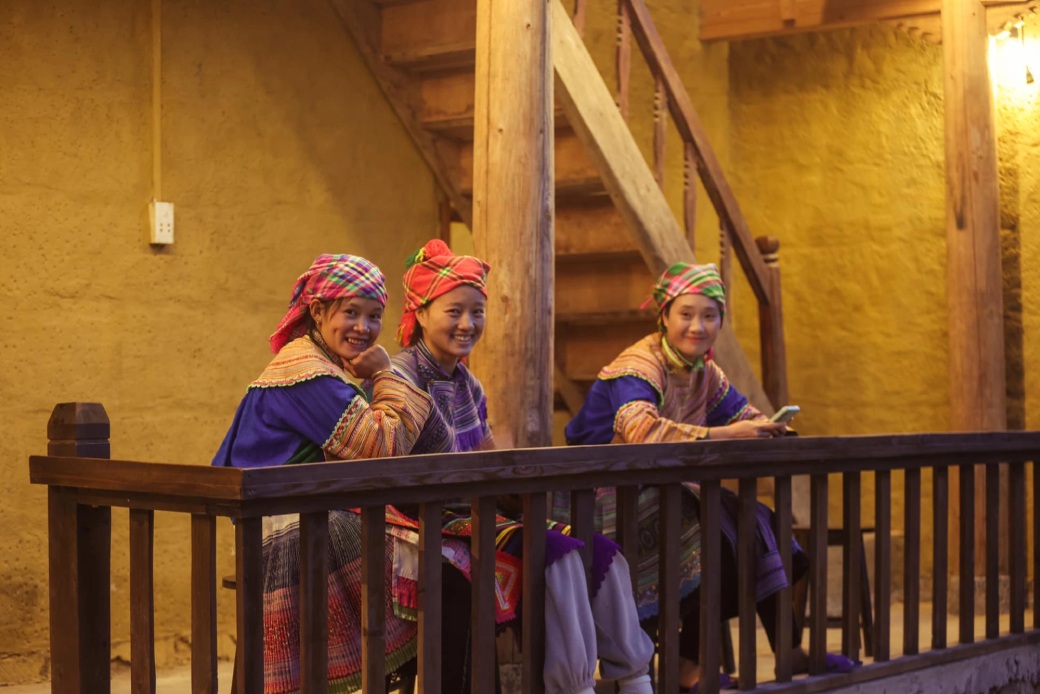
Source: Vnexpress
3.4. Savour local cuisine
The cuisine of Lo Lo Chai reflects the resourcefulness and culinary traditions of mountain people. Local dishes are prepared using ingredients grown in the harsh mountain climate, including corn, buckwheat, vegetables, and herbs that thrive at high altitudes.
Signature dishes include thắng cố (a traditional horse meat soup that's considered a delicacy), bánh khoái mì (buckwheat pancakes), rượu ngô (corn wine), and various grilled meats prepared with local spices and herbs. Meals are typically communal affairs, with families and guests gathering around low tables to share food and conversation.
The cooking methods often involve traditional techniques like wood-fired stoves and clay pots, which impart unique flavours that cannot be replicated with modern cooking equipment. Vegetarian visitors can enjoy dishes featuring locally grown vegetables, tofu, and grain-based preparations.

Thắng cố is one of the weirdest foods in Vietnam - Source: Eholiday
Read more: The best food in Ha Giang
3.5. Visit Lung Cu Flagpole - Vietnam's Northernmost Point
No visit to Lo Lo Chai is complete without climbing to the Lung Cu flagpole, which marks Vietnam's northernmost point. This symbolic monument sits atop Lũng Cú peak at an elevation of 1,470 meters above sea level, offering panoramic views of the surrounding mountains and valleys that extend into China.
The 20-meter tall flagpole flies the Vietnamese flag and serves as a powerful symbol of national sovereignty. The climb to reach the flagpole takes about 30-45 minutes along a well-maintained path with stone steps. Along the way, you'll encounter stunning viewpoints, unique rock formations, and opportunities to observe the diverse mountain flora.
At the summit, you can obtain an official certificate confirming your visit to Vietnam's northernmost point – a popular souvenir among travellers. The site also features information panels about the area's geography, history, and cultural significance.
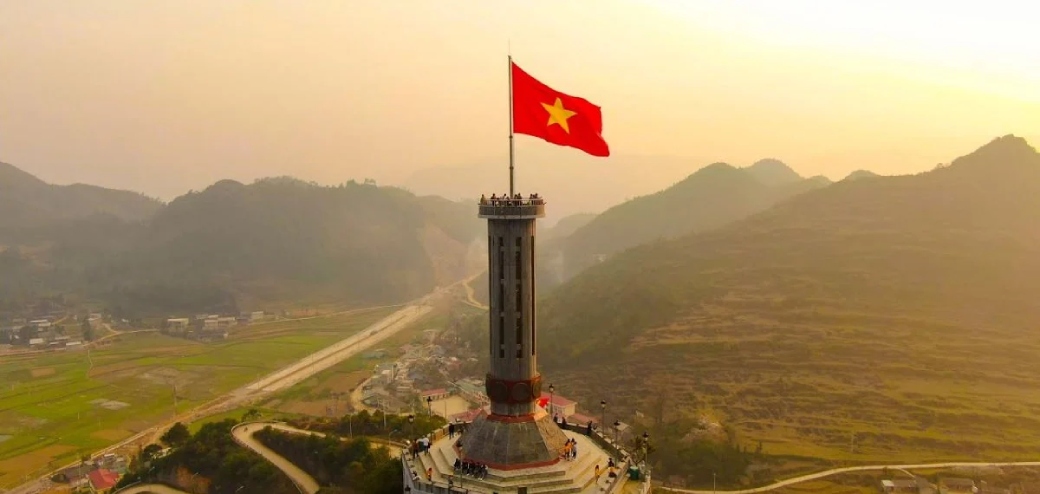
The panoramic view from Lung Cu Flagpole - Source: crystal bay
4. Important guidelines for visiting Lo Lo Chai
4.1. What you should do
- Respect Local Culture: Take time to learn about Lo Lo customs and traditions. Show genuine interest in their way of life, and ask questions respectfully. This demonstrates appreciation for their culture and helps build positive connections with community members.
- Ask Permission for Photos: Always request permission before photographing people, their homes, or private property. Many locals are happy to pose for pictures, but asking first shows respect and often leads to better interactions.
- Support Local Economy: Purchase handmade crafts, souvenirs, and food from village vendors and artisans. Your support directly benefits the community and helps preserve traditional crafts and skills.
- Dress Modestly: Wear appropriate clothing, especially when visiting homes or attending cultural events. Cover shoulders and knees, and avoid revealing clothing that might be considered disrespectful.
- Be Mindful of Your Behaviour: Maintain a peaceful demeanor, speak quietly, and avoid disruptive behaviour. The village values tranquillity, and respectful visitors contribute to the serene atmosphere that makes this place special.

Source: Laodong
4.2. What should you avoid?
- Don't Waste Food: Food waste is considered deeply disrespectful in Lo Lo culture. Only take what you can finish, and show appreciation for meals by eating everything on your plate.
- Avoid Pointing with Fingers: Pointing directly at people or objects with your finger is considered rude. Instead, use an open hand to gesture or indicate direction.
- Don't Enter Homes Uninvited: Never enter someone's house without explicit permission or invitation. Wait to be invited inside, and follow your host's lead regarding where you can go within their home.
- No Littering: Keep the village clean by properly disposing of all trash. The community takes pride in their pristine environment, and littering shows disrespect for their home and natural surroundings.
- Avoid Public Displays of Affection: Public kissing, hugging, or other displays of affection are not common in Lo Lo culture. Show respect for local norms by keeping physical affection private.

Source: Laodong
5. Other attractions in Ha Giang
While Lo Lo Chai is undoubtedly a highlight, Ha Giang province offers numerous other spectacular destinations worth exploring:
- Ma Pi Leng Pass stands as one of Vietnam's most dramatic mountain passes, featuring hairpin curves carved into cliff sides with breathtaking views of the Nho Quế River valley far below.
- Nho Que River winds through deep limestone canyons, creating some of Southeast Asia's most spectacular river scenery. The emerald-green waters contrast beautifully with the towering karst cliffs.
- Vuong Family Mansion in Sà Phìn village showcases the impressive architecture and history of a powerful local family, with its Chinese-influenced design and historical significance.
- Dong Van Old Town preserves colonial-era architecture and serves as the commercial heart of the karst plateau region, offering markets, restaurants, and cultural sites.
- Sung La Valley provides stunning panoramic views and represents one of the deepest valleys in the region, surrounded by towering limestone peaks.
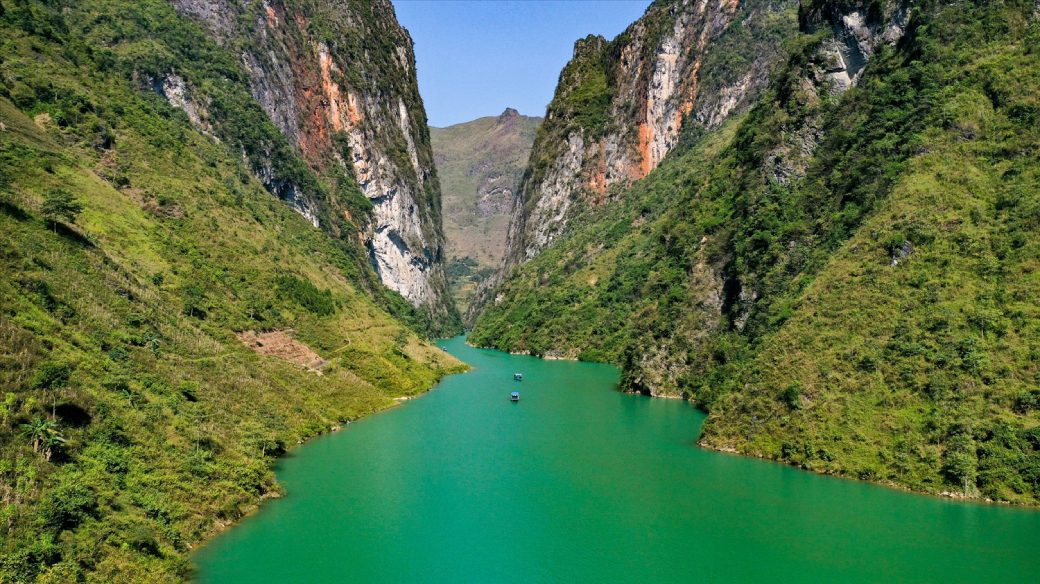
Nho Que river - Source: Baodantoc.vn
Lo Lo Chai village represents more than just a tourist destination of Ha Giang; it's a living museum of traditional mountain culture, architectural heritage, and human resilience in one of Vietnam's most challenging environments. The village offers visitors an authentic experience that few places in modern Vietnam can match, combining stunning natural beauty with genuine cultural immersion.
Whether you're drawn by the unique stone architecture, the opportunity to experience Lo Lo culture firsthand, or simply the chance to disconnect from modern life in one of Vietnam's most remote corners, Lo Lo Chai delivers an unforgettable experience that will deepen your understanding of Vietnam's remarkable cultural diversity.
For travellers seeking authentic cultural experiences and stunning mountain scenery, Lo Lo Chai should be at the top of your Vietnam itinerary. This remarkable village proves that some of the world's most meaningful travel experiences can be found in the most unexpected places.
Experience the authentic beauty of Vietnam's hidden gems with HagiangGo – your trusted partner for discovering the extraordinary cultures and landscapes that make Vietnam truly unique.
- Website: https://hagianggo.com
- Hotline 24/7: +84352777222 or +84867060139
- Whatsapp 24/7: +84352777222 or +84867060139

.jpg)

